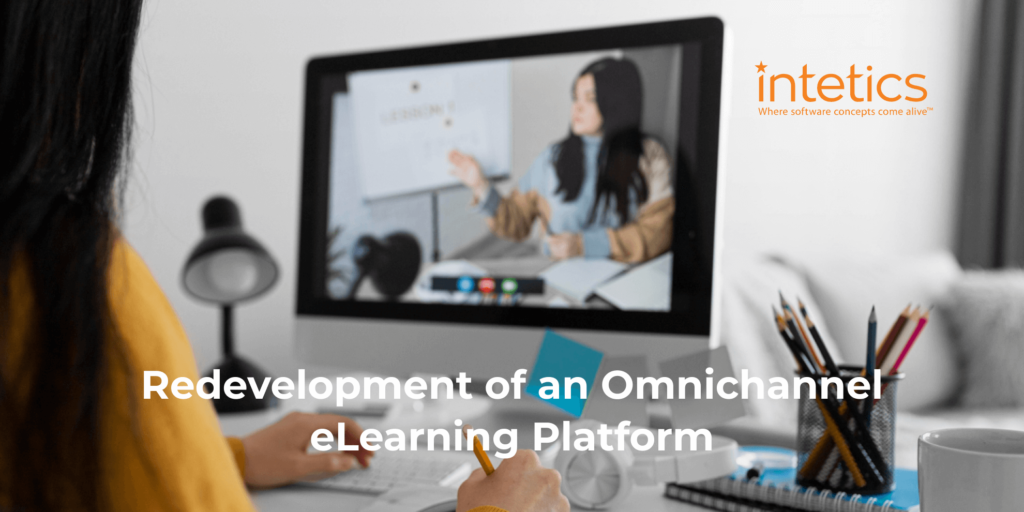“Omnichannel” is a term you are familiar with — though, not in the context of eLearning. It is more commonly used regarding marketing. At first, the idea was simple: if your company is going to market your services in several places (magazine, TV, radio), you should make sure your message is unified across all channels.

However, in a digital age, we are experiencing omnichannel everything. Customers might engage with a company on many Internet platforms: various social media pages, a website, a YouTube channel, and so on. On top of that, there are device types to factor in — and do not forget about in-person interactions!
Rather than omnichannel just being applied to marketing, brands today are delivering omnichannel experiences. They strive to deliver a seamless experience, no matter whether the customer is using a mobile or desktop device, using the internet or visiting a brick-and-mortar store.
While omnichannel environments easily lend themselves to certain industries like retail and finance, it`s slowly being applied to other areas — like education, for instance. Omnichannel eLearning is the next step up from blended learning (a hybrid approach of in-person and online content). So, what exactly does this kind of education entail?
What Is Omnichannel learning?
Am omnichannel eLearning approach aims to provide each user with a coherent learning experience across all methods of engagement. Here is an example:
- Desktop: A learner signs up for an online course on a desktop. They use their Facebook profile to sign into their account, join the community forum, take quizzes, watch videos, and more – all from their desktop computer.
- Mobile: A mobile app lets learners pick up on online courses where they left off while they`re on the go. What`s more, there is easy integration with the learning group on Facebook, and they can interact with other learners.
- Online Tutoring: If the learner reaches a section of a course that they find challenging, they can request a private tutoring session. It could take place within the app or through a third-party video conferencing platform like Skype or Zoom.
- In-Person: The instructor could organize a live event; users can register for it online and attend in person.
The goal of omnichannel eLearning is not to force your learners onto each of these platforms. Instead, itsto be more flexible and accommodating as an educational institution. You are making your content available to learners on whichever platform they prefer. Some learners are more familiar with one engagement style over another – they don`t have a smartphone, so they need to use your desktop platform.
Summed up, the main goals of omnichannel eLearning platforms are inclusivity and coherence.
Omnichannel eLearning Platform: Case Study by Intetics
One of Intetics’ Clients is part of the “Big Three” global educational publishers, providing software, content, and educational services to all levels of education — pre-K through postgraduate schools. The Client needed a multi-language, omnichannel eLearning platform specifically for the higher education sector, which would help educational institutions deliver a personalized, data-driven approach to instruction.
The Challenge
The Client tasked Intetics with overhauling their current platform and improving the learning experience for higher education institutions. Their prior platform was built on outdated architecture; Intetics needed to modernize and improve it, so it would meet customer, business, and end-user needs.
The main challenge was migrating the product from a unique proprietary development platform to a more flexible, scalable, modern one.
The Solution
Intetics formed a Remote In-Sourcing® Team of data engineers, which was responsible for the entirety of the project, enabling the Client to focus on other mission-critical tasks.
Using a wide range of skills, knowledge, and technology solutions, the Intetics team redeveloped the eLearning platform with microservices architecture and cutting-edge technology solutions.
The high-load application is designed to withstand a large volume of traffic, many users online at once, and a plethora of features.
Intetics followed CD/CI processes and reduced technology production costs by 10%. The project resulted in the platform being migrated to a more modern, scalable architecture — with enhanced functionality and a much better user experience.
Technologies Used
included Web API, xUnit, Webpack, Angular 9, Highcharts, Express, Node.JS, Sequelize ORM, AWS RDS, AWS ECS, Nx, Monorepo, Docker, and Jenkins. The team consisted of 22 people, including Project Managers, Team Leads, QA Engineers, JavaScript Developers, and DevOps Engineers.
The Bottom Line
“We are delighted in the work Intetics developers delivered for our customers. The skillful redevelopment of a multi-language, omnichannel eLearning platform is a fantastic product that meets all requirements and comes with a wide variety of useful features. Today, thanks to this platform, university students across America can use this adaptive technology, with complete access to learning analytics, that has boosted engagement 77%!”
The Client
The project was delivered on time and within budget — and it was met with exceptional student feedback. Around 87% of students that used the platform said that access to learning analytics had a positive impact on their studies, and 77% said the new features increased their engagement. 84% of students using the adaptive eLearning environment experienced a moderate to significant improvement in grades. What`s more, annual memberships and new member activation experienced a YoY increase of 12% and 9%, respectively.
